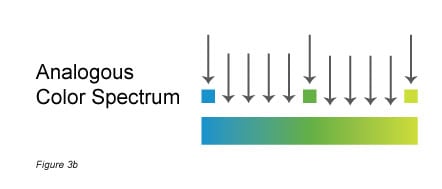The importance of color in analytical reports can be determined by several factors. Many analysts believe that the final results/numbers will speak for themselves and overlook this vital step. Often, just knowing your audience (the person reviewing the report) can be insightful. The goal is to showcase the results in an organized, professional snapshot that encourages information absorption. Color can detract from the overall message and promote discord, so that the actual intention of the report will not be assimilated efficiently. If your goal is to distract the audience from your information, then read no further. However, if it is to understand how color can promote greater comprehension, then continue.
Easy color selection can start with knowing your corporate colors. Most modern companies have a marketing person or brand specialist that can help define the specific color palette. Otherwise, the colors for the report are decided by the analyst. The first steps in implementing and achieving color harmony in any report is to understand color theory and apply a simple color formula.
Color Theory
Learning about color theory began for most of us in elementary school art class. The theory examines how colors fall on a spectrum and relate to one another. Associating color with personal and professional awareness began with studying the existence of color and its perception of the visual world. Assigning importance to color depends on its fundamental relationship to human connectivity. Many of us have a favorite color. Memory colors exist and can promote a mood or feeling. The business world did not escape the subjectivity of color. In many ways, organizational colors have forged the framework to understanding the nature of color and how each relates to the next.
Simple Color Formulas
Most color formulas are based off the color wheel derived from color theory. Figure 1. Some of the formulas require practice to achieve, but simple formulas are easy to adopt. Following these color formulas can be the first step in bringing color harmony to business reports. When a document has color harmony, the information is quickly and easily discernible. It’s not rocket science or extreme mathematical equations; however, these color formulas are used to maximize visual effectiveness. Here is your color formula starter kit:








